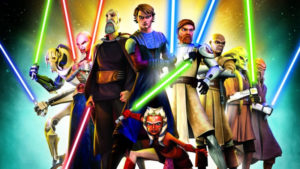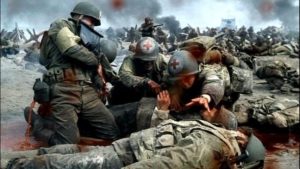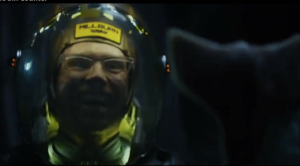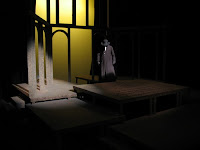
I appear to have gotten so excited about this review that I’ve written quite a lot of text. Here’s the abstract: The Order of the Stick, webcomic, found at
Giant in the Playground Games. A very clever parody of D&D games, with better characterization than some novels I’ve read. Go check it out.
There’s been a lot of talk lately about the comic book format coming into its own. Comic artists have decided to relabel their work “graphic novels” and argue that there’s nothing about combining words and pictures that makes the product inherently trash. I have to agree with them there, people have been putting words and text together since time immemorial. Graphic novelists seek to break free of the pow! bam! superhero tradition and produce actual art. Or is it literature? Works such as Persepolis and the Sandman series have been groundbreaking artistic successes.
Where does Rich Burlew’s The Order of the Stick fit into all of this? I’m not sure if I could call it a graphic novel. It’s a free webcomic that Burlew publishes a couple times a week on his website, Giant in the Playground, though there are bound versions available, too. It’s got its share of pratfall jokes, and the people are all stick figures, though they seem to have an XKCD-like elegance to them.
Yet this is one of the most psychologically complex comics I have read, right up there with Sandman and Persepolis. You wouldn’t think this would be true, judging from the premise: it’s a parody of role-playing games.
But that’s the genius of this strip. Burlew manages to render toothless genre clichés that would make most fantasy writers run screaming by tackling them head on. Roy Greenhilt and his heroic band of misfits take the absurdities of their universe for granted. For example, in this strip, our heroic band of adventurers is traveling through the woods when a band of ogres ambushes them. Haley Starshine points out that their horses should have been able to see them coming, so the ogres back up and try again. Familiars and horses vanish when they’re not needed by the narrative, monsters get hurt after the fact when characters realize they forgot to add a level bonus, and everybody frets about how many hit points they have remaining. It’s common knowledge that the tavern is the local employment agency. The characters seem to know they’re living inside a game, but to them it’s their world.
Which brings me to Redcloak. He’s what you would call a disgruntled NPC. If you don’t know what that stands for, you probably won’t get a lot of the humor in this strip. (It’s Non-Player Character, by the way.) He’s a goblin cleric. A villain, to be sure, but a narratively delicious one. His backstory is published in a prequel, Start of Darkness. Start of Darkness doesn’t just verge upon legitimacy as a work of literature. This one has made it. See, Redcloak wishes all the Good-aligned races would stop slaughtering every last goblin woman, man and child just because they have green skin and yellow eyes. Whoa! We’ve been going along reading Order of the Stick for some light comedy, and all of a sudden we’re grappling with issues of genocide.
There’s something wrong with the Alignment system in this world. Different-colored humans get along just fine, and the various Good-aligned races, though there’s the occasional wisecrack about height, seem to manage to lump it pretty well, too. But for some reason Good characters have license to slaughter Evil sentient beings just because. Even when Evil characters aren’t all that bad and Good characters aren’t always that great. Burlew’s done a great job of humanizing the greenskins here. Watching Redcloak’s decline and fall into becoming henchman to a lich is truly painful to see. The little cruelties, like where Redcloak’s promising nephew doesn’t even get to die on screen, are the worst.
And, oh, right, this world has protagonists, too. They’re a lot less complex than the baddies, but they’re still really fun to follow. Even though Roy’s a melee fighter, he’s actually quite bright. He’s on a quest to kill his dad’s old archenemy (the aforementioned lich) in order to prove that he can do it with a sword. Elan (human bard), is an idiot, except when he’s not an idiot and saves everyone’s kiester. Vaarsuvius (elven wizard) is delightfully gender ambiguous. Even Haley (human rogue archer) is more complex than first meets the eye.
If you’ve played a couple rounds of Dungeons and Dragons or a little World of Warcraft, you’ll probably love this strip. It’s remarkably intelligent. There’s visual jokes (Roy’s dad’s tombstone reads 1102-1124, 1124-1143, 1144-1149, 1149-1158, 1158-1159, 1159-1168, 1168-1180) and even literary references (when they pull the mysterious Thing out of the deepest darkest jungle, one of the pith-helmety types tells Marlow to go get the boat). If you don’t get that, your high school English class was missing something. Scroll back up and read the name of the prequel. Order of the Stick is not over yet, so I’m looking forward to seeing where it goes next. Oh, and Mr. Burlew, with a backstory as awesome as that, I expect Redcloak’s demise to be of nothing less than Snapean proportions of epicness. Just to let you know.
Go check it out on his site. We also happen to have the two prequels right here in the Benton House library. (It never hurts to plug Sci-Fi house, right?)







